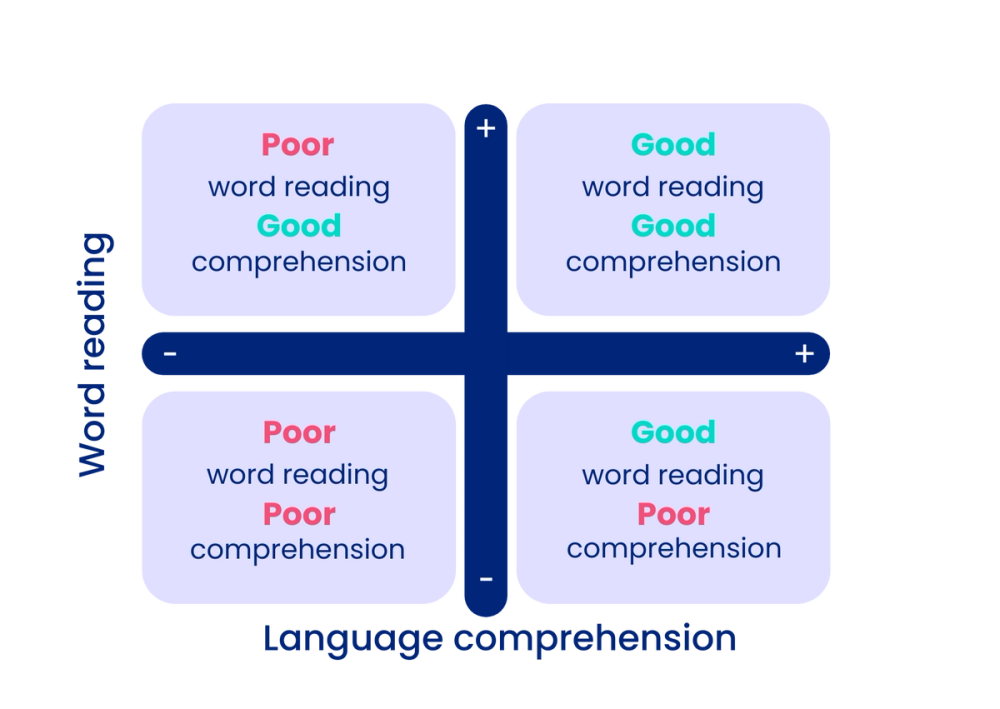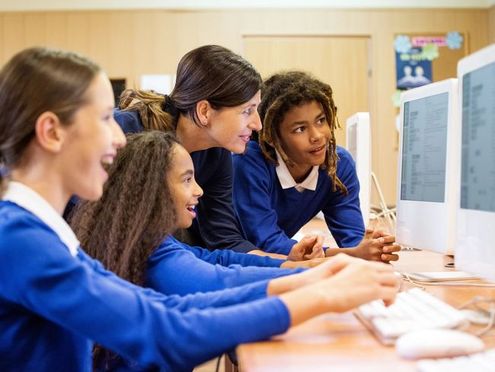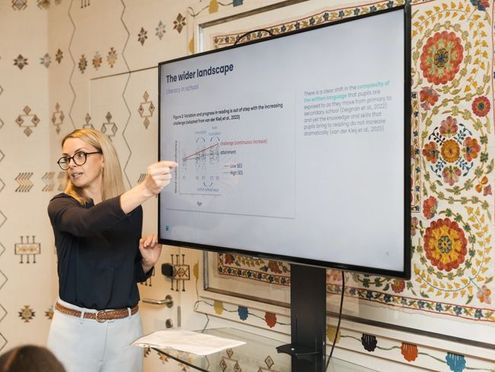The documentary wasn’t actually intending to dismiss dyslexia as a concept- in lots of ways it would be simpler if it did. But what it did argue was that the common understanding of dyslexia has seriously undermined our ability to support young people with a true reading disability.
We’ve previously written in detail about the relationship between reading comprehension and dyslexia, but this time, we’ll focus a little more on how we can support learners.
Dyslexia: what’s the upshot?
As Kate Nation observes, ‘reading comprehension tends to be low in children and young people with dyslexia’ (e.g., Ferrer et al., 2015; Shaywitz et al., 1999). I feel this doubly: I’m an English teacher by trade, and both my wife and son have dyslexia. Reading with my son is really, really tough. It’s as if we’re taking two things that his mind really struggles to reconcile- decoding and linguistic comprehension- and needling him page after page. It’s the cognitive version of that particularly twisted fitness instructor that continually asks me to do burpees. Deliberately.
Poor decoding is often seen as the root of all problems here: as a colleague recently put it: ‘the dyslexic brain simply does not chunk and process phonemes in the way that others do.’ So interestingly, dyslexia is usually associated with quadrant A (top left) in the Simple View (See fig.1) (e.g., Gough & Tunmer, 1986; Stanovich & Siegal, 1994).”

Gough and Turner (1986) Figure 1: classifying reading disorders within the Simple View of reading.
It’s not the end: it’s all about vocabulary
Bruck (1990) assessed reading comprehension in a group of adults with dyslexia. The result of that research shows that there is a huge variability in performance, suggesting that “some learners with dyslexia go on to make excellent progress in reading comprehension while others do not.” Bruck established that the two groups differed in vocabulary - poor reading comprehension was associated with vocabulary deficits, whereas good reading comprehension was not.
If we look at the simple view of reading: namely, that reading comprehension is the product of two skills: decoding and linguistic comprehension (RC= D X LC), on the assumption that while all of the participants had poor decoding as a result of their dyslexia, only a subset (those with low vocabulary) also had poor linguistic comprehension. Therefore, as decoding skills strengthened through development, adults with good vocabulary were able to make gains in reading comprehension whereas those with low vocabulary did not. It’s crucial that we keep this in mind.
These findings reinforce the need to continue to improve vocabulary knowledge for all learners, but especially for those learners that are poor decoders. The use of dual modality - written and aural information - that is delivered through Bedrock’s curriculum aims to ensure all learners are developing their language skills, whether they are poor decoders or not.
Bedrock and Dyslexia:
This is where things get really interesting. I was fortunate enough to listen to Amjad Ali - a wonderful SEND speaker - speak to colleagues about how they could support learners with SEND. I loved the notion that adaptation was ‘necessary for some, but beneficial for all.’ Deeply rooted in evidence-based vocabulary instruction, Bedrock’s method of vocabulary instruction fits directly into this way of thinking when it comes to dyslexia. Whilst for many, Bedrock’s instructional method is beneficial, for those with particular struggles with reading, Bedrock’s approach is arguably crucial.
So, it’s worth outlining here exactly why Bedrock is beneficial for young people with dyslexia. The Child Mind Institute offers some really interesting guidance on this: if - as is often stated - knowledge is the basis of learning, then Bedrock has put this into a uniquely learner-centred experience, placing all learners onto a tier 2 language and grammar journey that tailors to their specific needs. All the while, it’s also giving teachers and leaders data-driven insights into how best to support learners and move them forwards as well.
Teaching comprehension strategies to help learners derive meaning from what they’re reading
From thousands of tier 2 words, learners are placed in one of our 10 blocks and then given student friendly definitions, before simple comprehension activities help them to unpick the word meaning in context.
Multi sensory instruction
Again, deeply rooted in evidence based research, every time a learner is taught a concept on our platform, it does so in a multisensory way. Primarily, the narration allows for cognitive load to be minimised whilst the concept is introduced to the learner, but as they begin to learn more, their experienced is wide-ranging, including: image based activities, synonym/antonym tasks, scaffolded writing (not time pressured), and deeper thinking activities such as sentence completion. In other words, we’re constantly trying to push the button from different angles to help learners embed concepts into long term memory.
Repetition and review of skills
Our deep learning algorithm underpins everything: it intuitively learns the concepts that learners struggle with, giving them multiple opportunities to learn these words at a later point in their journey. It also gives teachers and leaders clear insights into the trends at individual, class, year and school level. As well as this, it’s worth mentioning that one word is exposed to a learner on multiple, spaced occasions as well, meaning that a learner cannot simply ‘click through’ and finish their work.
Intensity of intervention - that is, more than being pulled out of class once a week for extra help
Many of our partner schools use their MIS to create bespoke intervention groups that can easily be configured in our platform. This facilitates small, purposeful intervention sessions in which learners complete their Bedrock, and then come together as a class to discuss and work with any particularly trickier words in a supportive environment.
The upshot?
As we might expect - and like anything in life - there is no silver bullet. The best we can do is offer evidence based and research driven insights, and move forward with those. All of the benefits above, by the way, are seen in Bedrock Mapper as well - the only difference being that the power of specific knowledge is in the hands of the teacher in terms of sequencing the knowledge that learners are exposed to.
Fundamentally, it comes down to two considerations:
- How can we give learners the most cognitive-friendly experience when it comes to learning new knowledge?
- How can we use the insights of this interaction to move them forwards in their learning?




